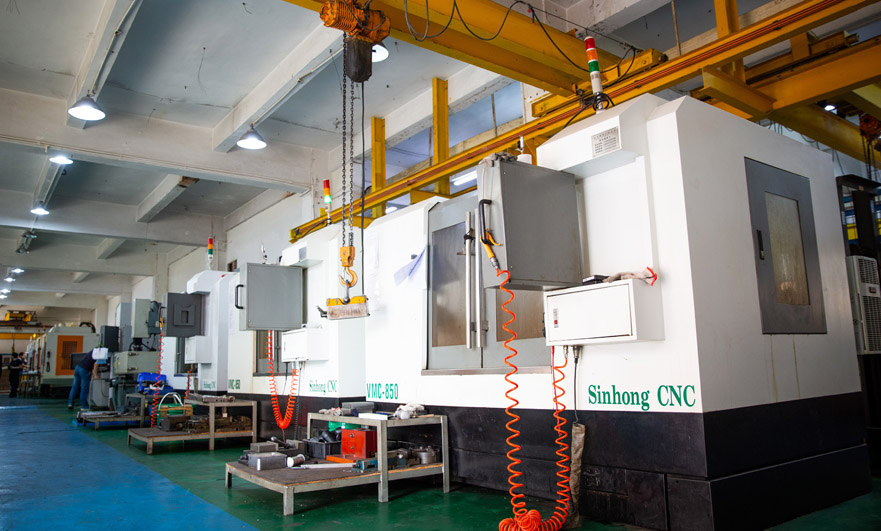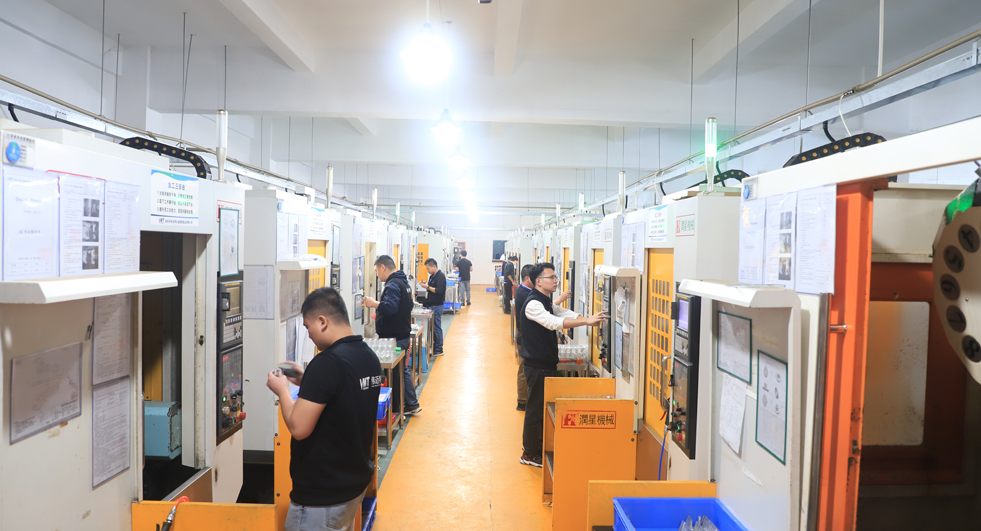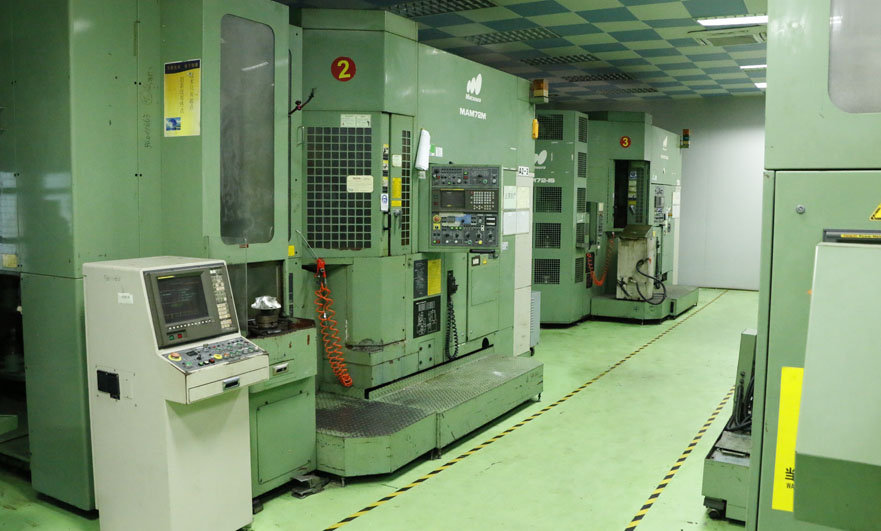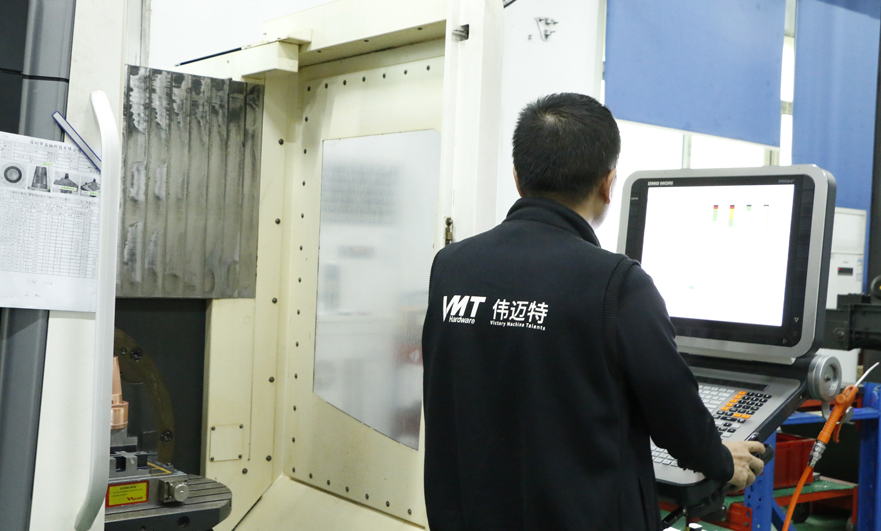15 years one-stop China custom CNC machining parts factory
 143 |
Published by VMT at Nov 09 2022
143 |
Published by VMT at Nov 09 2022
Some people say that first learn three-axis, and then go to four-axis, five-axis CNC machining center, what is the difference between these types of machine tools?
The role and advantages of the three-axis CNC machining center:
The most effective machining surface of the vertical machining center (three-axis) is only the top surface of the workpiece, and the horizontal machining center can only complete the four-side machining of the workpiece with the help of the rotary table. At present, high-end CNC machining centers are developing in the direction of five-axis control, and the pentahedron can be processed in one clamping of the workpiece. If equipped with a high-end CNC system with five-axis linkage, it can also perform high-precision machining on complex spatial surfaces.

Four-axis CNC machining
The so-called four-axis CNC machining generally adds a rotating axis, usually called the fourth axis. The general machine tool has only three axes, that is, the workpiece platform can move left and right (1 axis), front and rear (2 axis), and the spindle head (3 axis) is used for cutting workpieces. Rotating electric indexing head! In this way, bevel holes can be automatically indexed, and beveled edges can be milled, etc., without the loss of accuracy by secondary clamping.
Four-axis linkage machining features:
(1). The three-axis linkage CNC machining machine cannot be processed or needs to be clamped too long;
(2). Improve the accuracy, quality and efficiency of free-space surfaces;
(3). The difference between four-axis and three-axis; four-axis difference and three-axis with one more rotation axis. The establishment of four-axis coordinates and the representation of the code:
Determination of Z-axis: the axis direction of the machine tool spindle or the vertical direction of the worktable for clamping the workpiece is the Z-axis. Determination of the X-axis: the horizontal plane parallel to the workpiece mounting surface or the direction perpendicular to the rotation axis of the workpiece in the horizontal plane is the X-axis. The direction away from the spindle axis is the positive direction.

Vertical five-axis CNC machining center
There are two types of rotary axis of this type of CNC machining center, one is the rotary axis of the table.
The worktable set on the bed can rotate around the X-axis, which is defined as the A-axis, and the A-axis generally has a working range of +30 degrees to -120 degrees. There is also a rotary table in the middle of the worktable, which rotates around the Z-axis at the position shown in the figure, which is defined as the C-axis, and the C-axis rotates 360 degrees. In this way, through the combination of the A axis and the C axis, the workpiece fixed on the table can be processed by the vertical spindle except the bottom surface, the other five surfaces. The small Z-division value of A-axis and C-axis is generally 0.001 degrees, so that the workpiece can be subdivided into any angle, and CNC machined inclined surfaces, inclined holes, etc.
If the A-axis and C-axis are linked with the XYZ three linear axes, complex spatial surfaces can be processed. Of course, this requires the support of high-end CNC systems, servo systems and software. The advantages of this arrangement are that the structure of the spindle is relatively simple, the rigidity of the spindle is very good, and the manufacturing cost is relatively low.
But in general, the worktable can not be designed too large, and the bearing capacity is also small, especially when the A-axis rotation is greater than or equal to 90 degrees, the workpiece cutting will bring a large load-bearing moment to the worktable.
The front end of the main shaft is a rotary head, which can revolve around the Z axis 360 degrees and become the C axis. The rotary head also has an A axis that can rotate around the X axis, generally more than ±90 degrees, to achieve the same function as above. The advantage of this setting method is that the spindle processing is very flexible, and the worktable can also be designed to be very large.
This design also has a big advantage: when we use a spherical milling cutter to process a curved surface, when the centerline of the tool is perpendicular to the processing surface, since the linear velocity of the vertex of the spherical milling cutter is zero, the surface quality of the workpiece cut out by the vertex will be very poor. The design of the spindle rotation is adopted, so that the spindle rotates at an angle relative to the workpiece, so that the spherical milling cutter avoids the vertex cutting, and ensures a certain linear speed, which can improve the surface CNC machining quality. This structure is very popular for high-precision surface machining of molds, which is difficult to achieve with rotary CNC machining centers. In order to achieve the high precision of rotation, the high-grade rotary shaft is also equipped with a circular grating scale feedback, and the indexing accuracy is within a few seconds. Of course, the rotary structure of this type of spindle is relatively complex, and the manufacturing cost is also high.

Vertical 5-axis CNC Machining Center with Spindle Rotation
The gravity of the spindle of the vertical CNC machining center is downward, the radial force of the bearing in high-speed idle operation is equal, and the rotation characteristics are very good, so the speed can be increased. Generally, the high speed can reach more than 1,2000r/min, and the practical maximum speed is up to 4,0000 rpm. The spindle system is equipped with a circulating cooling device. The circulating cooling oil takes away the heat generated by the high-speed rotation, reduces it to a suitable temperature through the refrigerator, and then flows back to the spindle system.
X, Y, Z three linear axes can also use linear grating feedback, and the bidirectional positioning accuracy is within the micron level. Because the rapid feed reaches more than 40~60m/min, the ball screws of X, Y and Z axes are mostly cooled by the center. Like the spindle system, the refrigerated circulating oil flows through the center of the ball screws to take away the heat.

Horizontal five-axis CNC machining center
There are also two ways for the rotary axis of this type of CNC machining center. One is that the horizontal spindle swings as a rotary axis, plus a rotary axis of the worktable to achieve five-axis linkage CNC machining. This setting method is simple and flexible. If the spindle needs to be converted between vertical and horizontal, the worktable can be simply configured as a three-axis CNC machining center with vertical and horizontal conversion. The vertical and horizontal conversion of the main shaft cooperates with the indexing of the worktable to realize the pentahedral processing of the workpiece, which reduces the manufacturing cost and is very practical. CNC axes can also be set on the worktable, with a Z minimum index value of 0.001 degrees, but without linkage, it becomes a four-axis CNC machining center for vertical and horizontal conversion, adapting to different CNC machining requirements, and the price is very competitive.
The other is the traditional rotary axis of the worktable. The A-axis of the worktable set on the bed generally has a working range of +20 degrees to -100 degrees. There is also a rotary table B-axis in the middle of the worktable, and the B-axis can rotate 360 ??degrees in both directions. This horizontal five-axis CNC machining center has better linkage characteristics than the first method, and is often used for CNC machining of complex surfaces of large impellers. The rotary axis can also be equipped with circular grating feedback, and the indexing accuracy can reach several seconds. Of course, the structure of this rotary axis is more complicated and expensive.
At present, the table of horizontal CNC machining center can be larger than 1.25m2, which has no effect on the first five-axis setting method. However, the second five-axis setting method is more difficult, because the 1.25m2 worktable does the A-axis rotation, and it is really difficult to link with the B-axis rotary table in the middle of the worktable. The spindle speed of the horizontal CNC machining center is generally above 10,000rpm. Since the horizontal spindle has self-gravity in the radial direction, the radial force is uneven when the bearing is running at high speed, and a larger BT50 tool holder is also used. , the general Z up to 20,000rpm. The rapid feed of the horizontal machining center can reach more than 30-60m/min, the power of the spindle motor is more than 22-40KW, and the capacity of the tool magazine can be increased from 40 to 160 according to the needs. The CNC machining capacity far exceeds that of the general vertical machining center. Yes First choice for heavy machining.
Most CNC machining centers can be designed to exchange double worktables. When one worktable runs in the processing area, the other worktable replaces the workpiece outside the processing area to prepare for the processing of the next workpiece. The time of the worktable exchange depends on the work. The size of the table can be completed from a few seconds to tens of seconds.
The newly designed CNC machining center takes into account the structure to be suitable for forming a modular manufacturing cell (FMC) and a flexible production line (FMS). The modular manufacturing cell generally consists of at least two machining centers and four exchange worktables. All CNC machining centers Placed side by side, the exchange worktables are lined up in front of the machine tool, and many exchange worktables can be arranged in two rows, or even a double-layer design. There is one work station on each side as the position of the upper and lower workpieces, and the exchange worktables on the other work stations are equipped with workpieces waiting to be processed. On the machining center, the finished exchange table is taken out and sent to the next station or directly to the blanking station to complete the entire processing operation. In addition to the trolley and the exchange table, the flexible production line also has a unified tool library. Generally, there are hundreds of tools. The identity code information of the tools is stored in the system, and then sent to the machining center through the tool conveying system. After the tool is retrieved, the flexible production line often needs an FMS controller to command the operation.
In the past, five-axis CNC machining centers were mostly made in Germany, the United States, Japan, and Italy. It is gratifying that at the "China CNC Machining Machine Tool Exhibition" held in Shanghai in March this year, a number of domestically produced five-axis CNC machining centers were exhibited. Machining Center. For example, the gantry five-axis linkage CNC machining center exhibited. The worktable is 6m long and 2m wide. It adopts vertical spindle rotation, the A-axis rotation angle is ±100 degrees, and the C-axis rotation angle is ±200 degrees. This behemoth has attracted many visitors. China's CNC machining machine industry has reached an advanced level.
The above is just a summary of the VMT CNC machining factory. If you want to know more about CNC machining, you can contact us: inquiry@vimetal.com.cn to negotiate with us.
